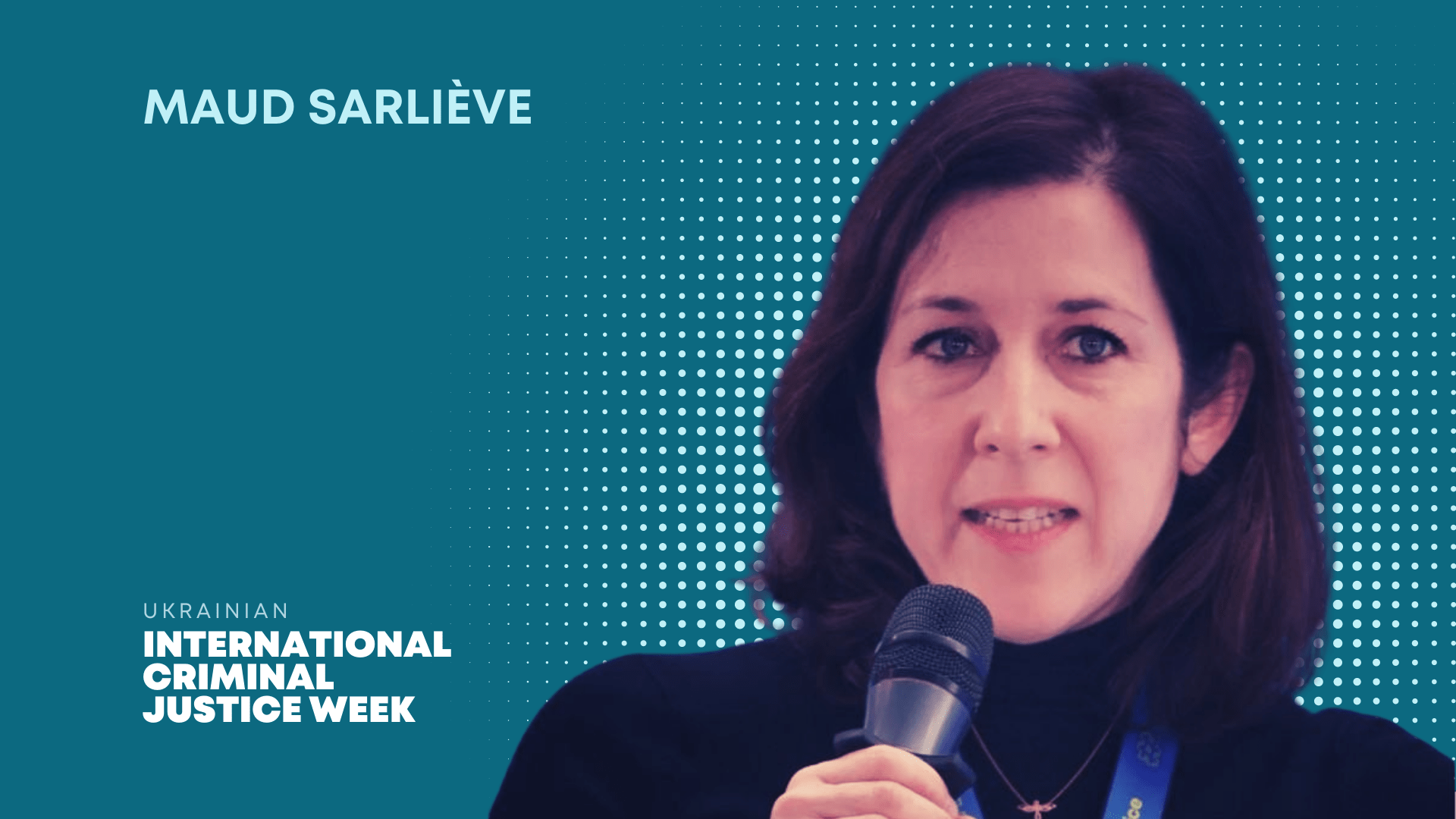Notes from Maud Sarlieve’s lecture – Crimes Against the Environment

Maud Sarlieve, an attorney specializing in complex international cases at the intersection of human rights and criminal law, presented her lecture “Crimes Against the Environment” to CCL on July 18. Her talk discusses the massive damage that Russia’s invasion has wrought to Ukraine’s environment and the devastating effects this has had on the Ukrainian people, with particular attention to the destruction of Kahovka Dam in June 2023, as well as the potential for legal redress under Ukrainian and international law.
Sarlieve begins with an overview of the long history of environmental destruction amid armed conflict. She emphasizes how impacts like unexploded ordnance or soil and water contamination remain felt long after the fighting ends, and how the lingering effects of war on the environment often serves as a barrier to lasting peace and sustainable development, by depriving local communities of the natural resources they depend on to survive. In the 20th century alone, such a dynamic was seen in World War II with the atomic bombings of Hiroshima and Nagasaki, in the Vietnam War with the mass use of defoliants like Agent Orange (which is when the term “ecocide” was first coined), in Kuwait’s oil fields being deliberately set on fire by Iraqi forces during the Persian Gulf War, and the draining of the Mesopotamian marshes by Saddam Hussein’s regime as a weapon against rebels. Environmental disasters during the war in Ukraine should thus be viewed in this context, and recognized as a crucial issue on their own that necessitates the outside world’s attention.
When it comes to Kahovka Dam, Sarlieve stresses that, apart from the people killed or made homeless by the flooding from the dam’s collapse, the loss of the dam and its reservoir will have detrimental long-term consequences for public and environmental health. The massive flooding has contaminated the drinking water supply for potentially hundreds of thousands of people, as well as created a fertile breeding ground for waterborne diseases. Moreover, the loss of a principal source of potable water for southern Ukraine (including occupied Crimea) threatens the future viability of agriculture for the entire region. The Kahovka Dam reservoir also supplied cooling water for the Zaporizhia Nuclear Power Plant, so the reservoir’s loss could exacerbate the serious crisis that has engulfed that facility (Europe’s largest nuclear plant) since its capture by Russian forces in March 2022. The flooding may have even dislodged landmines planted by Russian occupying forces, thus frustrating efforts to map and remove them.
Kahovka Dam is only the most vivid example of how the war’s devastation of the environment has compounded the suffering of Ukrainian civilians. Other instances of major Russian attacks on Ukraine’s environment include chemical contamination from the leveling of the Azovstal steelworks in Mariupol, and pollution of the Black and Azov Seas from shelling of ships in harbor. But perhaps none of these can compare to the cumulative effects of Russia’s near-daily attacks on critical infrastructure that threaten public health, food availability and safety, access to drinkable water, and biodiversity. Agriculture, the mainstay of Ukraine’s economy, is no longer viable in much of the south and east of Ukraine. It is clear that pollution, loss of ecosystems, and unexploded ordnance risk continuing the trauma of the war for the Ukrainian population, for long after Russia has been defeated.
The war has brought renewed importance to the fact that, according to Sarlieve, Ukraine is one of the few countries to define the crime of ecocide in its code of law. As Sarlieve states in her talk, Article 441 of the Criminal Code of Ukraine defines ecocide as mass destruction of the environment, including but not limited to the mass destruction of biodiversity and the contamination of air and water, and declares it a crime punishable by a prison term of between eight and fifteen years. Importantly, this article applies in times of both peace and war, thus possibly making it applicable to acts committed since 2014 by Russian proxies and occupation authorities on Ukrainian territory, but not necessarily done in the course of an attack on Ukrainian armed forces or civilians. Also relevant is Article 438, which outlines the definition of war crimes under Ukrainian law; it includes the cruel treatment of civilians (potentially applicable since many of Russia’s attacks on public infrastructure have no clear military objective, and are done only to terrorize civilians), as well as the use of internationally prohibited methods of warfare.
While ecocide is not established as a crime in international law the way it is in Ukrainian law, destroying the environment in the prosecution of war may still be able to be targeted under some key provisions. Perhaps most important is Article 35, Paragraph 3 of Additional Protocol I to the 1949 Geneva Conventions, passed in 1977, which forbids methods of warfare that are intended or may be expected to cause “widespread, long-term and severe damage to the natural environment.” According to Sarlieve, this article is only applicable for damage as the result of an attack; this may limit its application to Kahovka Dam, since it was in Russian-occupied territory when it was most likely sabotaged by Russian forces. (As Sarlieve says, “can you attack yourself?”) Article 55 of Additional Protocol I may be more far-reaching, in that it prohibits destruction of the environment in warfare that causes “widespread, long-term, and severe damage;” notably, it includes acts done as a means of reprisal.
Sarlieve notes that the biggest challenge to applying these laws is that neither Ukrainian nor international authorities have ever prosecuted anyone for destruction of the environment in war; as she says, “there is no case law at this stage.” Both the Criminal Code of Ukraine and international law do not lay out objective criteria for destruction of the environment to ascertain whether it rises to a prosecutable level. While the most large-scale disasters like Kahovka Dam unmistakably meets the threshold of ecocide under Ukrainian law, not all of the numerous instances of poisoning of water sources and attacks on infrastructure that have occurred since Russia’s invasion began may be found to qualify. Furthermore, there is no clearly enumerated standard for mens rea (the mental state of criminal intent) in the text of these laws; while it is possible that an individual could be prosecuted without evidence of explicit intent, that question remains ambiguous at present. Finally, it may be difficult to tie a particular act of wartime environmental destruction to an individual suspected perpetrator or perpetrators. Moreover, due to the anticipated difficulty (to say the least) of apprehending perpetrators, trials may have to be conducted in abstentia.
Nevertheless, Sarlieve considers these issues far from insurmountable. With the effective collaboration of Ukrainian lawyers, environmental scientists, human rights investigators, and civil society, as well as their international partners, Sarlieve believes that Ukraine could very well set a revolutionary legal precedent for the prosecution of environmental crimes in war. Ukrainian judicial and political authorities, up to President Zelensky, have declared that obtaining justice for the destruction of Ukraine’s environment is a priority for them. For the sake of Ukraine’s path to a peaceful and democratic future, it is crucial that their efforts continue, and receive support from the international community.

